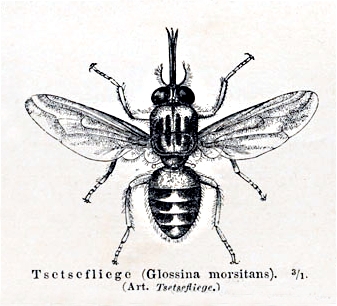Facts About Tsetse fly
Tsetse flies, also known as tik-tik flies, are large, blood-feeding insects found in tropical Africa. Belonging to the genus Glossina, these flies are obligate parasites, meaning they rely exclusively on the blood of vertebrates for sustenance. Tsetse flies are particularly significant because they transmit trypanosomes, the protozoan parasites responsible for diseases such as human sleeping sickness and animal trypanosomiasis, both of which have considerable economic impacts in sub-Saharan Africa.
Due to their medical importance, tsetse flies have been the subject of extensive research. Some distinctive features of tsetse flies include their folded wings and elongated proboscis. Interestingly, fossilized tsetse flies have been discovered in Colorado, dating back approximately 34 million years. Currently, there are 23 known species of tsetse flies in Africa.
The spread of tsetse flies in Africa has been influenced by historical events such as the introduction of rinderpest, which facilitated the colonization of new regions by tsetse flies and the subsequent spread of sleeping sickness. The word "tsetse" originates from the Tswana language, a Bantu language spoken in southern Africa, and it simply means "fly."
Scientists have developed a comprehensive understanding of tsetse fly biology, including their morphology, anatomy, life cycle, genetics, and symbiotic relationships. Classified in the order Diptera, these blood-feeding parasites are notorious for being vectors of trypanosomes, which cause trypanosomiasis in both humans and animals.
Controlling tsetse flies and the diseases they spread involves various strategies such as vector control, surveillance, and treatment. Techniques employed include the sterile insect technique, trapping, and pesticide campaigns. Successful eradication of tsetse flies has demonstrated significant benefits for rural development and poverty alleviation.

 Uganda
Uganda